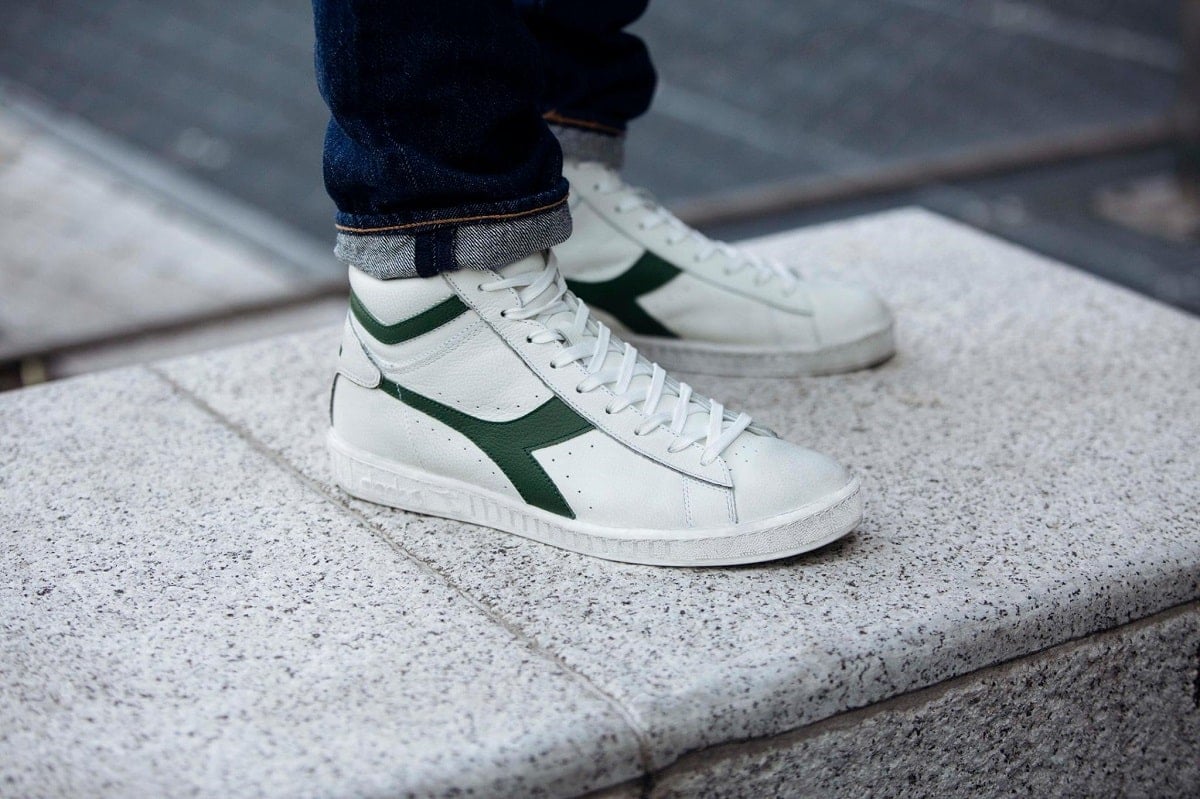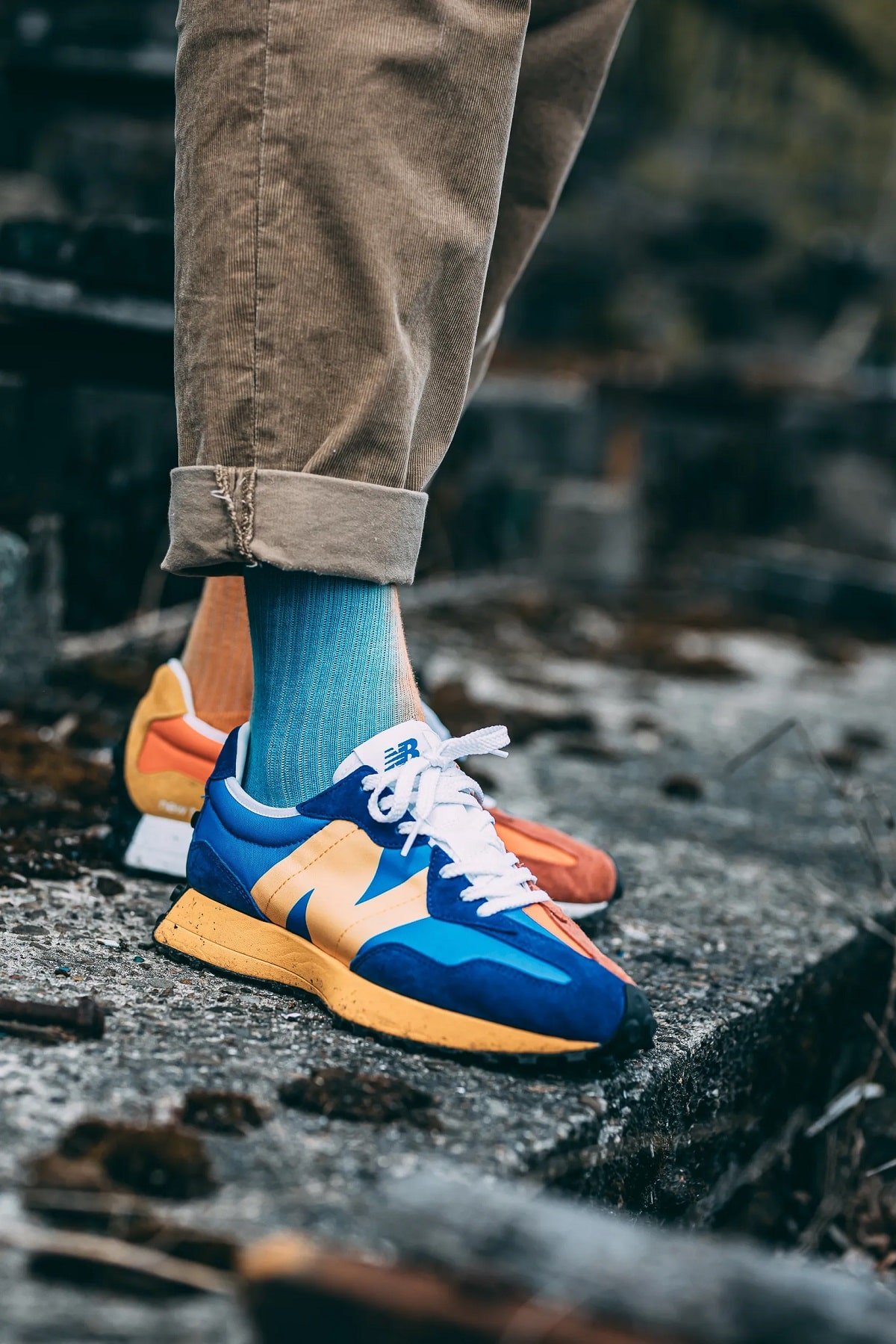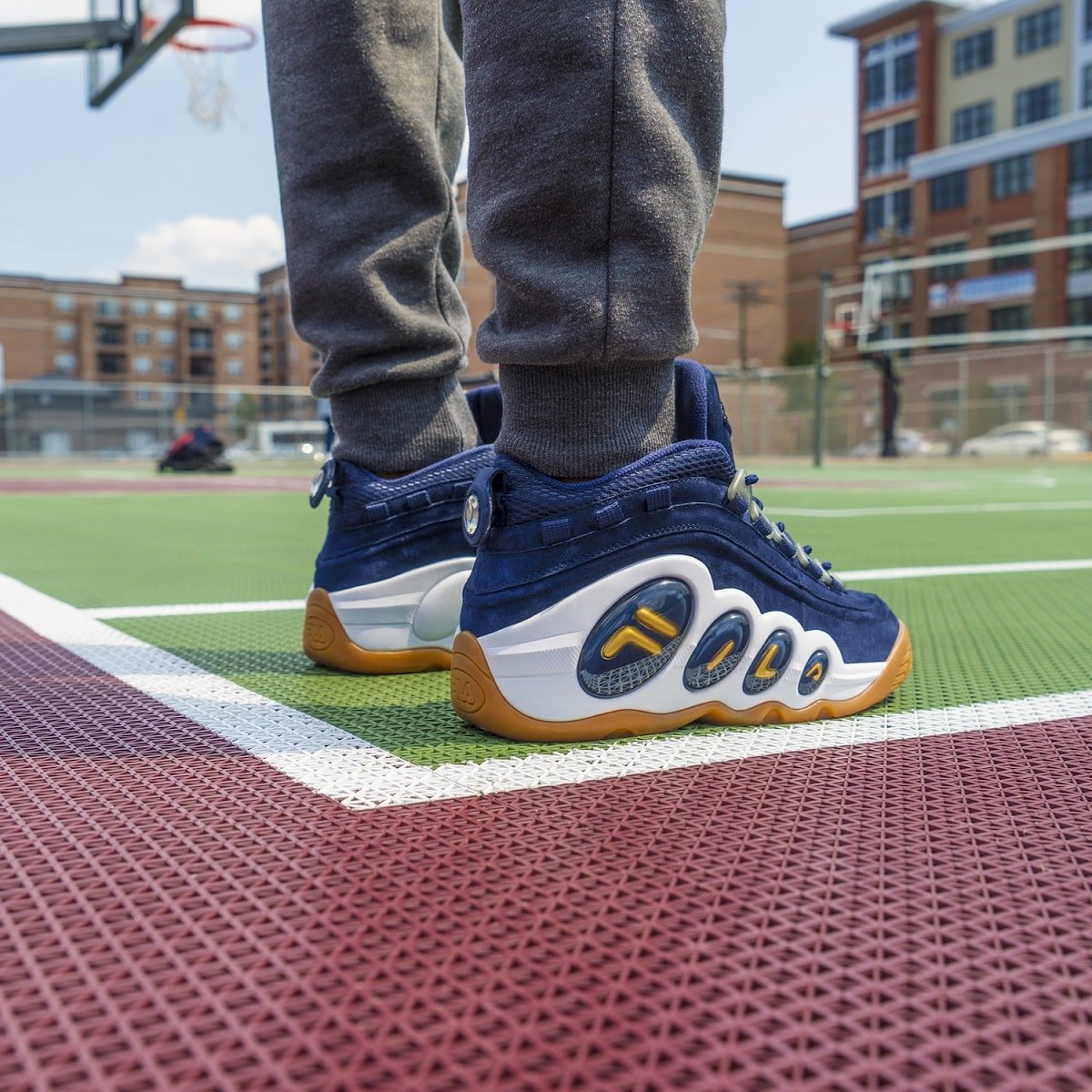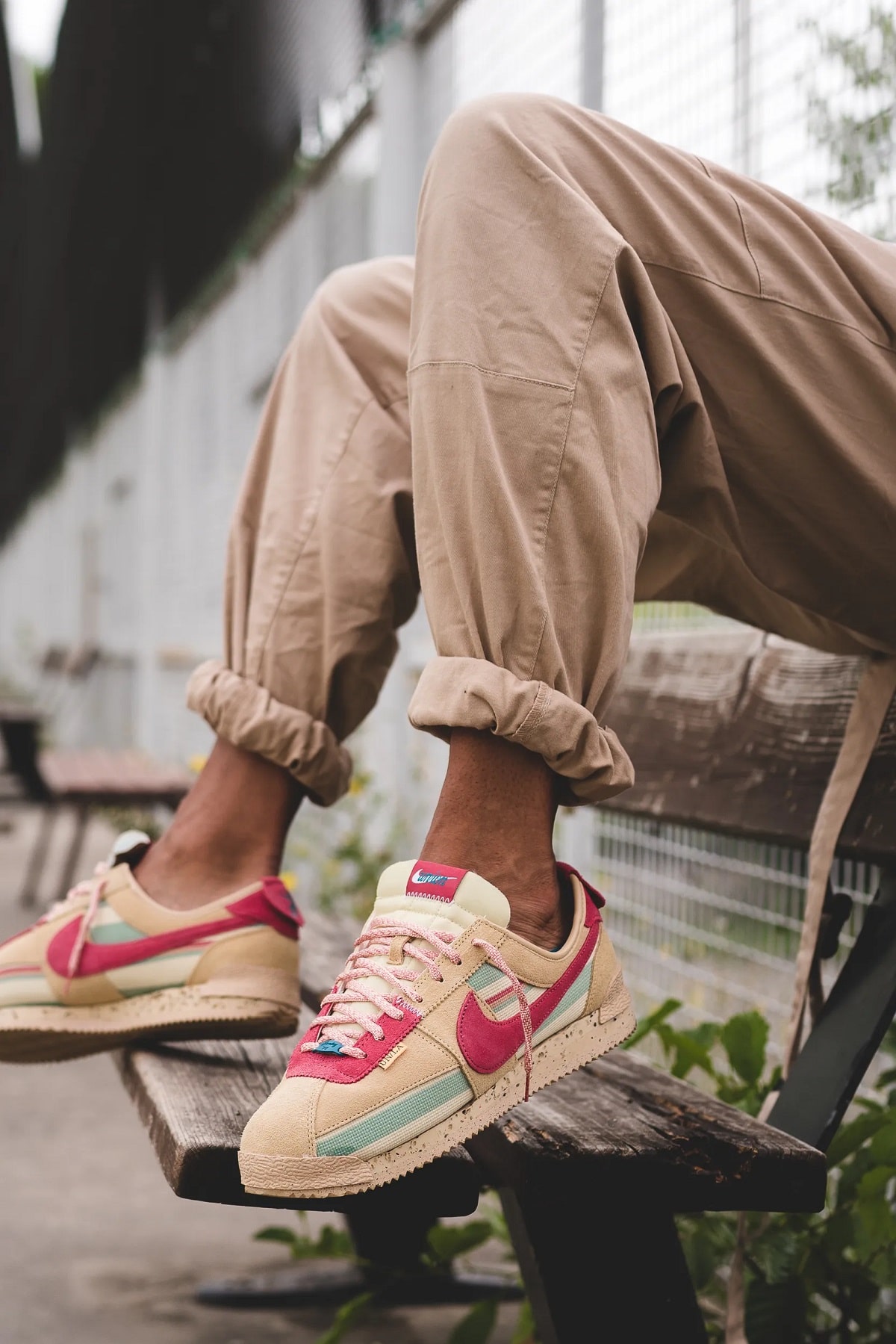1
HOME > Fashion History >
THE APPEAL OF RETRO TRAINERS
Written by Ivan Yaskey in Fashion History on the 5th October 2022

Especially with the general push toward sustainability these days, it’s disappointing on multiple levels to see your trainers, whether for casual or active use, quickly sport wear. Textiles appear frayed, the midsole seems as if it were pounded into a pancake, and you even spot cracks along the outsole. Granted, these developments come from the design direction all active shoes have moved in over the past 15 years – lighter, breathable, and made with more synthetic components versus leather or cotton. The result delivers: You move faster, your feet get less sweaty, and you experience less fatigue, but you also find yourself cycling through trainers at a faster rate than you did, say, in the 1990s or 2000s. In line with this observation, retro trainers are having their second heyday. Modeled after the active shoes of decades past – think 1970s track shoes through 1990s basketball and 2000s skate shoes – these stand out with thicker, sturdier, and often leather-based construction. They’re noticeably heavier, too, despite some modern upgrades, and just as they did back then, their modest techy underpinnings are overshadowed by more stylish colour-blocking. This latter facet, in turn, makes them an ideal street shoe, no matter how you move or where you go. Beyond the whole “everything vintage is new again” trope that 2022 has pushed (see this past year’s 1950s, 1970s, 1980s, 1990s skate, and Y2K influences), here’s why old-school trainers are having their moment:
Heavy on the Colour-Blocking
Yes, not everything is so contrast heavy – see the Reebok Classic as one example – but most of what you spot adheres to this aesthetic. There are the paneled, stripe-heavy designs of the ‘70s that give way to what can be best-described as the chunky and geometric ‘80s, before everything became streamlined by the ‘90s yet not so minimal your shoes showed their wear after a few months. The vibe takes you back to a time, at least in terms of nostalgia, where performance technologies were new, and a flashy design showed that off on the track or court.

Sturdier Construction
“Things just don’t last as long as they used to” is what everyone says about the technologies of the past, be it appliances, furniture, or clothing. Shoes aren’t any different. These designs relied on leather and canvas, and padding and support varied from the nothing-at-all Converse All Stars to the puffier Air Jordan high-top of the ‘80s and ‘90s. These days, an entirely leather running shoe would be out of the question: Overlays, yes, but the design simply slows someone down who’s looking to improve their time. Yet, if this isn’t your goal, this more protective outer and sometimes thicker midsole holds steady and delivers more comfort as your casual everyday pair.
Performance Technologies
Of course, at the time these shoes were introduced, their technologies felt practically novel, be it greater traction via Nike’s waffle treads or more ankle support on the court. Today, though, these developments feel quaint. We’re used to impact absorption, a more tailored heel-to-toe drop, and greater responsiveness that helps you move forward, bounce back, and fight fatigue. In this direction, retro – or even simply just classic – trainers have been retrofitted with more modern-day developments for a more familiar feel that keeps up with you.

New Collaborations
Particularly where skate shoes are concerned, collaborations have meant that Nike Dunks – introduced in the ‘80s and reworked in the 2000s for the Nike SB line – never truly die out. The same goes for Jordans. There’s always a new iteration that, be it through colours, patterns, or merging two brands’ design elements, highlights the shoe as a versatile canvas. Beyond these sneakerhead staples, normcore collaborations – for instance, between New Balance and J.Crew – breathe new life into what’s best described unironically as a “dad shoe.”
The Vintage Streetwear Market
While vintage streetwear makes classic styles more accessible, it has started following the same trajectory as the watch market: limited-edition, no-longer-produced pieces can fetch into the hundreds of thousands, based on rarity. Much like the resale market, this approach turns retro fashion into a highly sought after collectible.

Key Retro Trainers
Whether through their timelessness, current updates, or inspiration for retro-modern silhouettes from Koio, Beckett Simonon, and Cole Haan, essential retro trainers include:
- Nike Waffle Trainer 2: This is the quintessential ‘70s-era track shoe. While its technologies have since been updated, the paneled exterior, prominent Swoosh logo, and textured Waffle treads make it a reliable walking shoe in the present.
- Air Jordans and Nike Dunks: Once a classic, always a classic, no matter how they get reconfigured each time.
- Nike Cortez: Introduced in the ‘70s, the Cortez also never died completely. Today, the more rounded appearance has become a blank canvas for multiple collaborations and colour combinations.
- New Balance 574: This paneled tonal style emerged in the late ‘80s and continues to hold up as a solid cross-trainer.
- Puma ST Runner 2: The paneling and lower profile have made this definitive trainer a staple over multiple decades.
- Brooks Vanguard: Another ‘70s throwback, the Vanguard is relatively simple compared to what Brooks is currently capable of but stands on its own through its distinctive T-toe detail.
- Asics Tiger: Whether you attribute this to Asics or Onitsuka, the Tiger symbolizes the transition from the leather-heavy ‘70s and ‘80s to the somewhat more breathable streamlined ‘90s and 2000s.
- Fila Bubbles: These stood out with a distinctively puffy and boldly colour-blocked appearance that influenced streetwear and hip-hop style for over two decades.
- New Balance Men's 623: With its bulky exterior and white and grey colourway with minimal piping, this silhouette started getting noticed a few years ago with the “dad” shoe trend. Outside of fashion, it remains a decent cross-trainer and walking shoe due to the cushioning provided.
- Reebok Classic Leather: If any shoe encapsulates the ‘80s, it’s the Reebok Classic – another “puffy” leather shoe, albeit in a solid trainer shade. Aside from the retro appeal, it’s still sold as a dependable cross-trainer and walking shoe.
- Adidas Superstar: Although some will say the Samba is a more classic shoe, the Superstar’s rounded capped toe ultimately set the tone for the current generation of dress sneakers.

Trending
2
3
4
5
6
7
8
9
10










